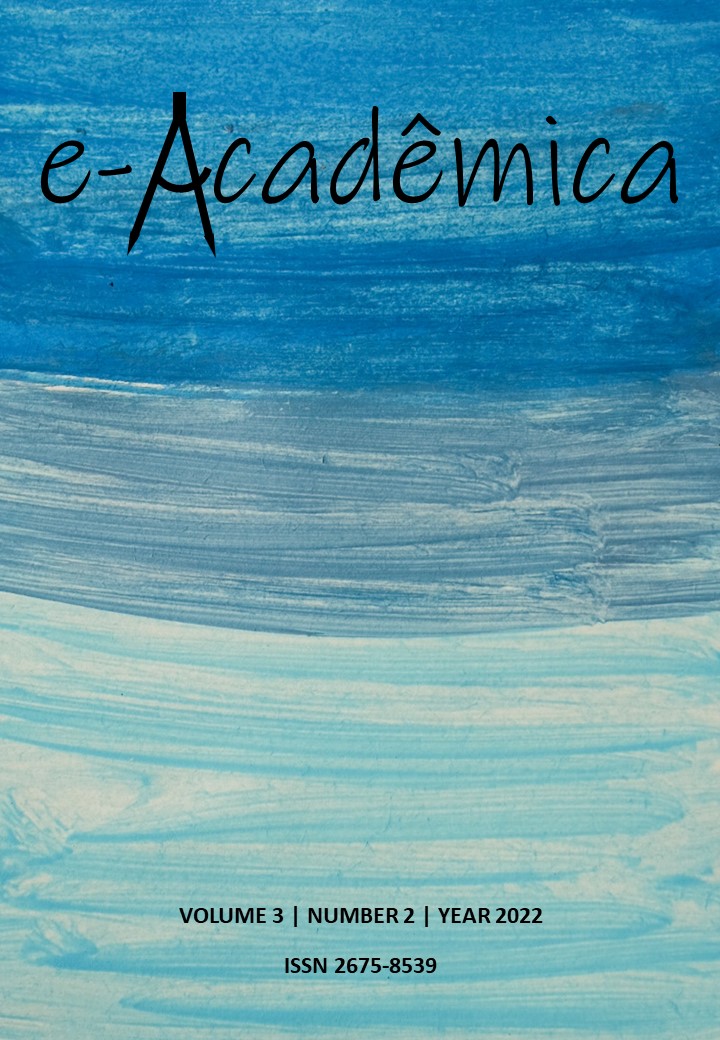Tissue regeneration in the treatment of atrophic scars: a systematic review
DOI:
https://doi.org/10.52076/eacad-v3i2.164Keywords:
Microneedling; Acne; Aesthetics; Scar.Abstract
Introduction: The scars caused by acne are among the aspects that negatively affect the psychological profile and physical appearance of people. It is common for acne to start at puberty, with greater emphasis on adolescents between 14 and 17 years old. Among the various aesthetic treatments indicated to improve the regeneration and appearance of acne-prone and acne-scarred skin, we have microdermabrasion, also called crystal peeling and microneedling, intended to even out the skin. General objective: List the main treatments for atrophic scars caused by acne. Methodology: This is an integrative literature review research, presented in a qualitative way. Data collection was performed through an electronic search in the National Library of Medicine and Caribbean Health Sciences databases for the period from 2011 to 2022. To compose the data searches, the Health Sciences Descriptors were used: acne , microneedling, aesthetics and scarring. Conclusion: The microneedling technique is effective for disorders of the epidermis, such as atrophic acne scars, with an overall improvement in skin texture, with good clinical results, without any serious complications after the procedure.
References
Albertini, B. B., & de Souza, F. G. L. (2020). Ação do microagulhamento em pessoas com cicatriz de acne. Artigo. Pós-graduação em Procedimentos Estéticos e Pré e Pós-Operatório–Faculdade FASERRA. https://portalbiocursos.com. br/ohs/data/docs/234/17AYYo_do_microagulhamento_em_pessoas_com_cicatriz_de_acne. pdf.
Cachafeiro, T. H., Maldonado, G., & Escobar, G. F. (2015). Comparação entre laser Erbium Fracionado não Ablativo 1340 nm e microagulhamento para tratamento de cicatrizes atróficas de acne: ensaio clínico randomizado.
Souza, D. M., & Fabra, M. N. (2019). Microagulhamento no Tratamento de Cicatrizes Atróficas de Acne-Revisão na Literatura. Tecnologia em Cosmetologia e Estética-Pedra Branca.
Fulco, T., & da Silva, M. G. (2018, February). Uso estético do microagulhamento no tratamento de estrias rubras e albas. In Simpósio (No. 6).
Doddaballapur, S. (2009). Microneedling with dermaroller. Journal of cutaneous and aesthetic surgery, 2(2), 110.
El-Domyati, M., Barakat, M., Awad, S., Medhat, W., El-Fakahany, H., & Farag, H. (2015). Microneedling therapy for atrophic acne scars: an objective evaluation. The Journal of clinical and aesthetic dermatology, 8(7), 36.
Faria, J. D. (2003). Patologia geral: fundamentos das doenças com aplicações clínicas. Rio de, 86-116.
Figueiredo, A., Massa, A., Picoto, A., Soares, A. P., Basto, A. S., Lopes, C., ... & Bello, R. T. (2011). Avaliação e tratamento do doente com acne–Parte I: Epidemiologia, etiopatogenia, clínica, classificação, impacto psicossocial, mitos e realidades, diagnóstico diferencial e estudos complementares.
Gama, R. (2011). Dermaroller–máscara de ascorbosilane C. Revista Biotec. Ano, 3, 19.
Damazio, M., & Gomes, R. (2013). Cosmetologia: Descomplicando os princípios ativos.
Goodman, G. J., & Baron, J. A. (2006). Postacne scarring–a quantitative global scarring grading system. Journal of cosmetic Dermatology, 5(1), 48-52.
Kalil, C. L. P. V., Frainer, R. H., Dexheimer, L. S., Tonoli, R. E., & Boff, A. L. (2015). Tratamento das cicatrizes de acne com a técnica de microagulhamento e drug delivery. Surgical & Cosmetic Dermatology, 7(2), 144-148.
Keller, R. (2006). Estudo clínico e histopatológico das cicatrizes de acne em pacientes fototipo II-V após irradiação com o laser Nd: Yag 1064 nm (Doctoral dissertation, Universidade de São Paulo).
De Lima, A. A., De Souza, T. H., & Grignoli, L. C. E. (2015). Os benefícios do microagulhamento no tratamento das disfunções estéticas. Revista Científica da FHO/Uniararas, 3(1).
Lima, E. V. D. A., Lima, M. D. A., & Takano, D. (2013). Microagulhamento: estudo experimental e classificação da injúria provocada. Surgical & cosmetic dermatology, 5(2), 110-114.
Lima, C. N., Santana, L., do Nascimento Pereira, D., de Vasconcellos, J. B., de Carvalho Lacerda, V., & Vasconcelos, B. N. (2016). Microagulhamento no tratamento de cicatrizes atróficas de acne: série de casos. Surgical & Cosmetic Dermatology, 8(4), 63-66.
Lucky, A. W. (1995). Hormonal correlates of acne and hirsutism. The American journal of medicine, 98(1), S89-S94.
Maio, M. D. (2004). Tratado de medicina estética. In Tratado de medicina estética (pp. liv-2256).
Park, S. H., Kim, D. W., & Jeong, T. (2012). Skin-tightening effect of fractional lasers: comparison of non-ablative and ablative fractional lasers in animal models. Journal of plastic, reconstructive & aesthetic surgery, 65(10), 1305-1311.
Pereira, B. B., Terruel, G. M., & Carrillo, M. F. B. (2016). Tratamento das cicatrizes atróficas de Acne por meio do Microagulhamento com equipamento Dermapen em Mulheres entre 20 a 30 anos. Revista Científica do Unisalesiano, 7(15), 4-8.
Ribeiro, C. (2010). Cosmetologia Aplicada a Dermoestética 2a edição. Pharmabooks.
Rosas, F. M. B., Mulinari-Brenner, F., & Helmer, K. A. (2012). Avaliação comparativa do laser de CO2 fracionado e da dermoabrasão no tratamento de cicatriz de acne. Surgical & Cosmetic Dermatology, 4(4), 298-303.
Teixeira, M. A. G., & França, E. R. D. (2007). Mulheres adultas com acne: aspectos comportamentais, perfis hormonal e ultra-sonográfico ovariano. Revista Brasileira de Saúde Materno Infantil, 7(1), 39-44.
Downloads
Published
How to Cite
Issue
Section
License
Copyright (c) 2022 Sirleia de Souza Teles Miranda; Tharine Clara Vogado ; Wellington Carlos Silva; Kauanny Gonçalves Rodrigues; Polyana Martins Neiva Porfírio; Silvia Longatti; Laila Ferreira

This work is licensed under a Creative Commons Attribution 4.0 International License.
Autores que publicam nesta revista concordam com os seguintes termos:
1) Autores mantém os direitos autorais e concedem à revista o direito de primeira publicação, com o trabalho simultaneamente licenciado sob a Licença Creative Commons Attribution que permite o compartilhamento do trabalho com reconhecimento da autoria e publicação inicial nesta revista.
2) Autores têm autorização para assumir contratos adicionais separadamente, para distribuição não-exclusiva da versão do trabalho publicada nesta revista (ex.: publicar em repositório institucional ou como capítulo de livro), com reconhecimento de autoria e publicação inicial nesta revista.
3) Autores têm permissão e são estimulados a publicar e distribuir seu trabalho online (ex.: em repositórios institucionais ou na sua página pessoal) a qualquer ponto antes ou durante o processo editorial, já que isso pode gerar alterações produtivas, bem como aumentar o impacto e a citação do trabalho publicado.










